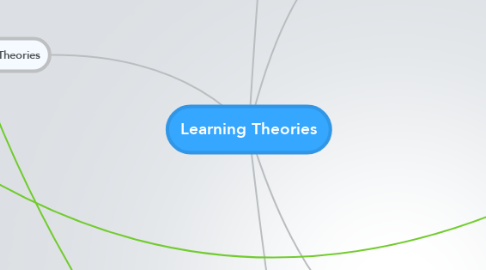
1. Technology Theories
1.1. SCOT
1.1.1. Social Construction of Technology
1.1.2. Human action shapes technology
1.1.2.1. Technology is a social entity
1.1.3. The social world dictates if technology is successful or not
1.1.3.1. those who are in control of the social world determine if technology is successful or not based on their definition of best
1.1.4. Principle of Symmetry
1.1.4.1. This goes to explain the sociology of science. The evolution of the bicycle helps in explaining the social construction of technology and why the penny farthing did not becomes a mainstream production model whereas the bicycle did.
1.1.4.2. Other factors that contribute to principle of symmetry and why the social dynamics of technology become more important based on advertising of the design, how it is interpreted, and how those problems can be prioritized for the consumer.
1.1.4.2.1. Interpretative Flexibility
1.1.4.2.2. Relevant Social Groups
1.1.4.2.3. Design Flexibility
1.1.4.2.4. Problems and Conflicts
1.1.5. Teaching implications: have students become critical thinkers of how society uses technology and why
1.1.5.1. take a sociological perspective on issues relating to technology and why they have become popular
1.2. TPACK
1.2.1. Technological Pedagogical Content Knowledge
1.2.2. There are 3 areas of knowledge
1.2.2.1. Pedagogical
1.2.2.2. Content
1.2.2.3. Technology
1.2.3. There are 7 different learning areas in which our knowledge resides. This is all based inside a context or framework.
1.2.3.1. Content Knowledge (CK)
1.2.3.2. Technology Knowledge (TK)
1.2.3.3. Pedagogical Knowledge (PK)
1.2.3.4. Pedagogical Content Knowledge (PCK)
1.2.3.5. Technological Content Knowledge (TCK)
1.2.3.6. Technological Pedagogical Knowledge (TPK)
1.2.3.7. Technological Pedagogical Content Knowledge (TPCK)
1.2.4. The 7 different learning areas are more easily understood in the TPACK diagram. Click on the to view.
1.2.5. Teaching implications: TPACK allows teachers to decide what type of knowledge they need more or less of in a lesson plan or activity.
1.3. Philosophy of Teachnology
1.3.1. teacher's philosophy on how and why to use technology in the classroom
1.3.2. a personal view, belief, opinion, course of action on technology in the classroom
1.3.3. This personal philosophy is influenced by past educational experiences, current views on technology and its relatedness to the subject matter, and lastly learning theories
1.3.4. This personal belief is revised over time
1.3.5. Teaching Implications: Shapes the role of technology in the classroom. Also is changed as the social views of technology in the classroom change as well as technology improves.
2. Behaviourism
2.1. Oldest of the Learning Theories
2.2. Can be linked to the times of Aristotle
2.3. used to be solely linked with mental and cognitive tasks until Skinner associated behaviourism with environmental stimuli
2.4. Three types of environment stimuli : Discriminative Stimuli, Response, Discriminating Stimuli
2.5. Teaching implications: Skinner wrote a book on the Technologies of Teaching where he states what are the best consequences for behaviour
2.5.1. Consequences can either be positive or negative
2.5.1.1. Positive reinforcement is used to reproduce a certain behaviour
2.5.1.2. Negative reinforcement is used to decrease a certain behaviour
2.5.1.3. Punishment is used to stop a behaviour all together
2.5.2. Consequences happen after a desired outcome or behaviour is produced
3. Cognitive Load
3.1. Information Processing Theory
3.2. 3 types of memory
3.2.1. Working
3.2.1.1. Can hold a max. of 7 separate cognitive events
3.2.1.2. Overload happens when the number of cognitive events exceeds 7
3.2.1.2.1. or if its ability to builds a schema is put at risk
3.2.2. Schema
3.2.2.1. Are memory paths developed by the working memory to the long term memeory
3.2.2.2. Strong schemas are when you perform an unconscious task due to the frequent and effective pathways between working and long term memory
3.2.2.2.1. Also known as automation
3.2.3. Long Term
3.2.3.1. unlimited and assists the working memeory
3.2.4. Teaching Implications
3.2.4.1. Cannot exceed more than 7 new concepts to students
3.2.4.2. Need to structure schemas with effective repetition
3.2.4.3. Work towards automation
4. Constructivism
4.1. at the root of the theory it deals with observation and scientific studies or research
4.2. people develop knowledge through experiences and the reflection of those experiences
4.3. New experiences are compared with previous knowledge and go to either support or change previous understanding
4.4. Teaching implications
4.4.1. Use activities that challenge a students perspective on the information
4.4.1.1. Experiments
4.4.1.2. real world problem solving
4.4.1.3. open discussions on issues or theories
4.4.1.4. reflection
4.4.2. Students become expert learners of the information presented due to reflecting on how the activity has changed their outlook
4.4.2.1. Spiral effect - every new piece of information is compounded onto another previously learned concept
4.4.3. Students develop strategies on how to learn
5. Connectivism
5.1. Impacted by technology
5.2. Informal learning fills a growing portion of our education
5.2.1. Communities of practice and perfection
5.2.2. completion of work related tasks
5.2.3. personal learning networks
5.2.4. life long related tasks
5.3. Learning is now a lifelong process
5.4. Technology is shaping the way we learn
5.5. Know-how and know-what is being superseded by know-where
5.5.1. know-where refers to knowing where to find the information by which technology has provided for us
5.6. The ability to decipher between important and unimportant information is growing
5.6.1. The ability to see connections between different sets of information is now a core skill
5.7. knowledge does not solely exist inside the human brain but in non-human implications or technology
5.8. Teaching implications: management and leadership of information activities are important in order to find and make connections with relevant knowledge
5.8.1. group work
5.8.2. research papers
5.8.3. supported debates
